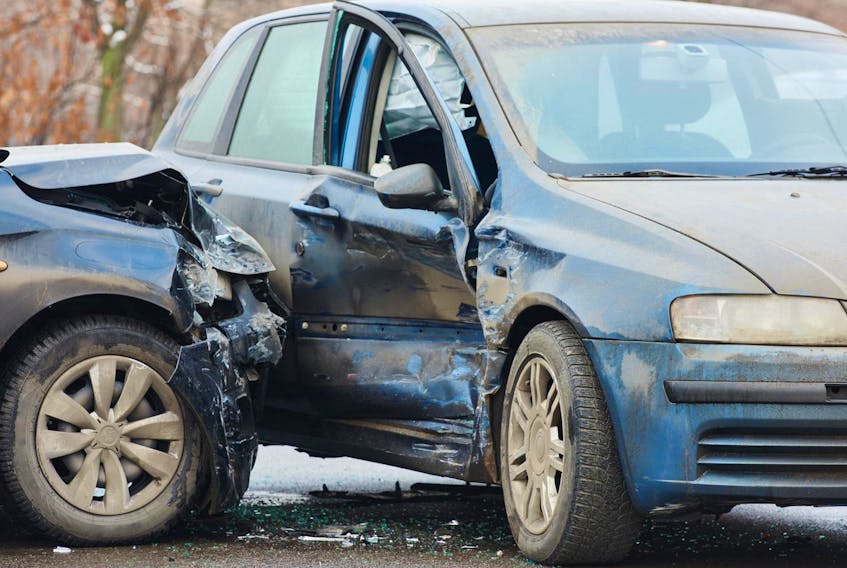Intersections can be the most dangerous locations on any roadway. More collisions occur at intersections than at any other location.
More cyclists and pedestrians are killed or injured at intersections than at any other point on the road.
Successfully negotiating intersections is one of the most basic – yet often poorly done — driving skills. An inordinate number of incidents occur in these locations for two basic reasons — excessive speed or the failure to identify an issue in time to take proper action. This occurs most often because of inattention, but also due to failure to use proper visual skills.
As with most things involving the control of moving vehicles, time and space are the keys.
Two objects cannot occupy the same space simultaneously. That includes intersections. This leads to all types of problems, rules, laws, signs, activities and crashes. The most basic of intersections, where no signs or signals regulate traffic flow, are called uncontrolled intersections. Negotiating these comes down to courtesy and common sense. The concept is really quite simple — the vehicle that arrives first, gets the right-of-way. If two vehicles arrive at exactly the same second, a driver should yield to the vehicle to the right.
Simple, and for decades it worked rather well. Even roundabouts or rotaries are based on that principal — first come, first served. But it wasn’t too long before the basic nature of humans came to the fore, and someone contested who got there first, resulting in a collision or argument.
That led to the first basic signage regarding intersections — the yield sign. Simply put this indicates a driver approaching an intersection should yield the right or way – or slow and give way to the traffic on the road unto which you are merging.
More heavily trafficked areas require direction — these controlled intersections have yield signs, stop signs or traffic signals. But despite these regulatory interventions, collisions regularly occur at controlled intersections, most often because one driver failed to identify the intersection, simply didn’t see there was another road, or traffic from another direction. Whether it is inattention or poor visual search habits, the result is the same.
If a driver regularly practices the common method of looking 10 to 15 seconds ahead, they will be aware of not only the intersection, but also any regulatory signage and traffic related to it. They see the signage in plenty of time, and/or any traffic lights and whether or not it is stale — and likely to change. They will also see any pedestrian, bicycle or other non-motorized user likely to intersect their path of travel.
There are some basic rules and methods to use when approaching or passing through an intersection: 1. Always check traffic to the left first, as vehicles from that direction will cross your path of travel first; 2. Check oncoming traffic for any signs they intend to cross your intended path. These signs can include anything from a signal to lane position or even the driver’s eyes or the front wheels of the vehicle turning; 3. Proceed only when you have determined your intended path of travel is clear.
In situations where the lights are out for some reason, we go back to the very basics. The lack of signals makes it an uncontrolled intersection. Negotiating these comes down to courtesy and common sense. One at a time. Take notice of the sequence, and wait for your turn before cautiously moving into the intersection.
Turning left in front of opposing traffic is the most common cause of crashes for novice drivers. This is simply a matter of learning how much time and space is required to allow the other vehicle to go through the intersection or how much time and space is required to safely cross in front of that vehicle without interfering with its speed or direction. If that vehicle is approaching at 100 km/h more time and space will be required than if it is travelling at 30 km/h.
Even a right turn contains possible conflict — not only with vehicles approaching from your left, but also with following vehicles. Signal your intentions in plenty of time and check your rear and side mirrors to ensure vehicle following you do not run into you when you slow for your turn — or even try to turn inside you. Another common problems in more populated areas is pedestrians who may step off a curb or be crossing in front of you. Look for pedestrians as you approach the intersection, check for traffic to your left then look right, with a last quick glance to the left before entering the turn.
Motorcyclists are often astounded at how many motorists fail to see them when making right turns, pulling across in front of the smaller two-wheeled vehicle. Similarly operators of large pieces of equipment are often surprised at how many people fail to recognize their signals and intention to turn. Due to their extended wheelbase, these vehicles have to swing to the left before turning right in order for the following trailer to complete the turn.
All too often an ignorant motorist will try to pass that vehicle on the right or turn inside them — only to find themselves in the blind spot of the big rig and squeezed into a situation.
Use all of your visual skills and aids before turning. The range of fellow road users sharing that intersection can run from a monster tractor trailer to a child on a bike.









